Welcome to IBonomics! We are excited to launch and hope you find the website useful! Learn more about us here!
Welcome to IBonomics! We are excited to launch and hope you find the website useful! Learn more about us here!
A diagram showing the effect of a government subsidy on a market, resulting in a downward shift of the supply curve, lower price for consumers, and increased quantity supplied.
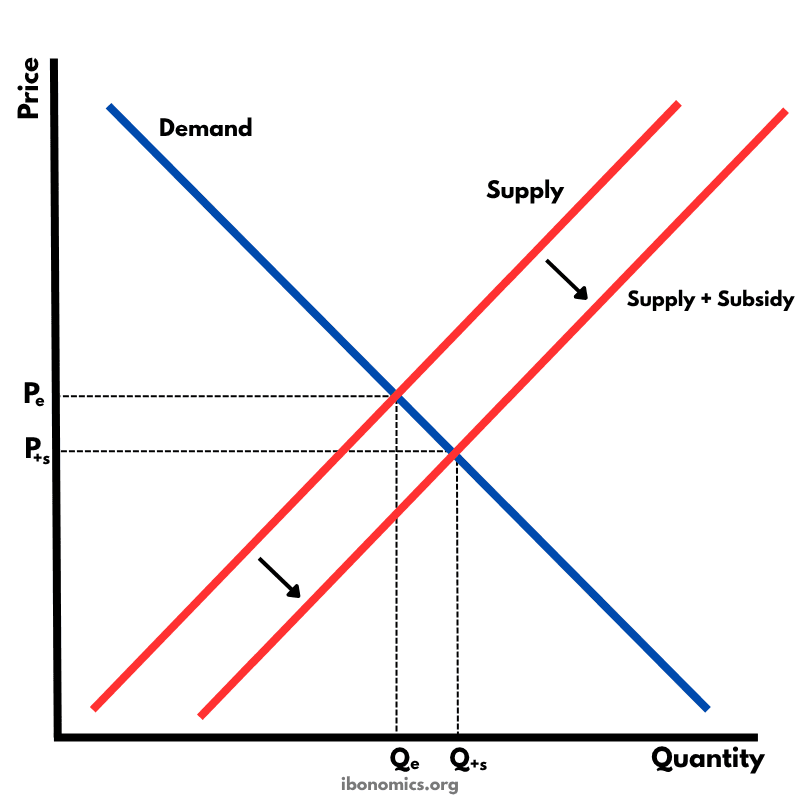
Demand Curve: Downward-sloping, representing the inverse relationship between price and quantity demanded.
Supply Curve: Upward-sloping, reflecting the direct relationship between price and quantity supplied before subsidy.
Supply + Subsidy: A downward shift of the supply curve due to a per-unit subsidy, reducing producers' costs.
Price Effect: The market price falls from Pe to P+s, making the good more affordable for consumers.
Quantity Effect: Output increases from Qe to Q+s due to the incentive created by the subsidy.
A subsidy is a payment made by the government to producers to reduce their costs of production and encourage increased output.
The subsidy causes the supply curve to shift downward (or to the right), from 'Supply' to 'Supply + Subsidy'.
At the new equilibrium, the price paid by consumers falls from Pe to P+s, and quantity increases from Qe to Q+s.
The vertical distance between the original and new supply curves represents the value of the subsidy per unit.
While subsidies can increase affordability and support industries (e.g., agriculture, green energy), they have opportunity costs and can lead to overproduction or inefficiencies if poorly targeted.
Explore other diagrams from the same unit to deepen your understanding
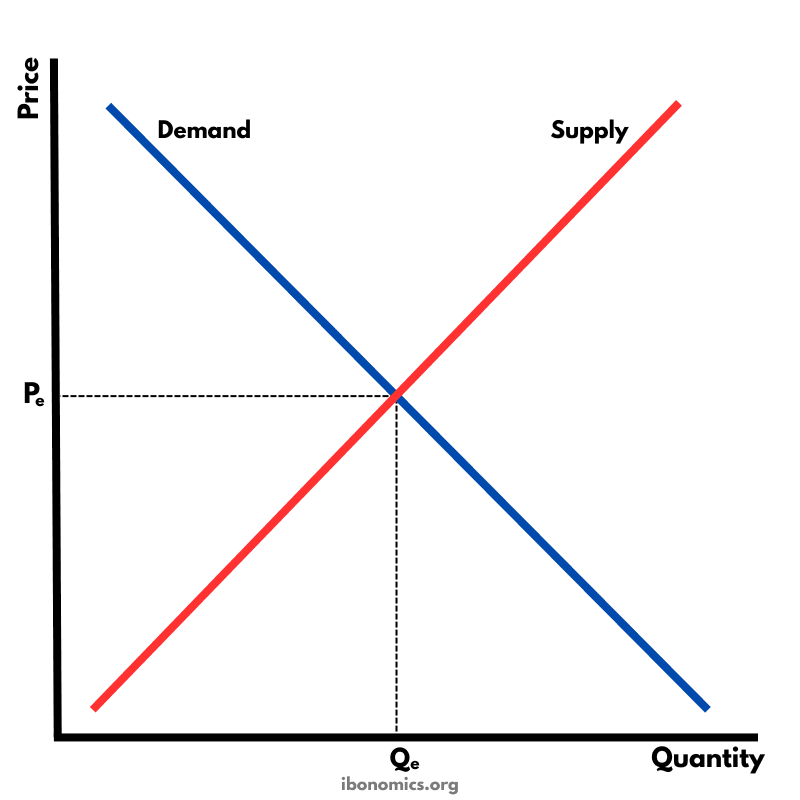
The fundamental diagram showing the relationship between demand and supply in a competitive market, determining equilibrium price and quantity.
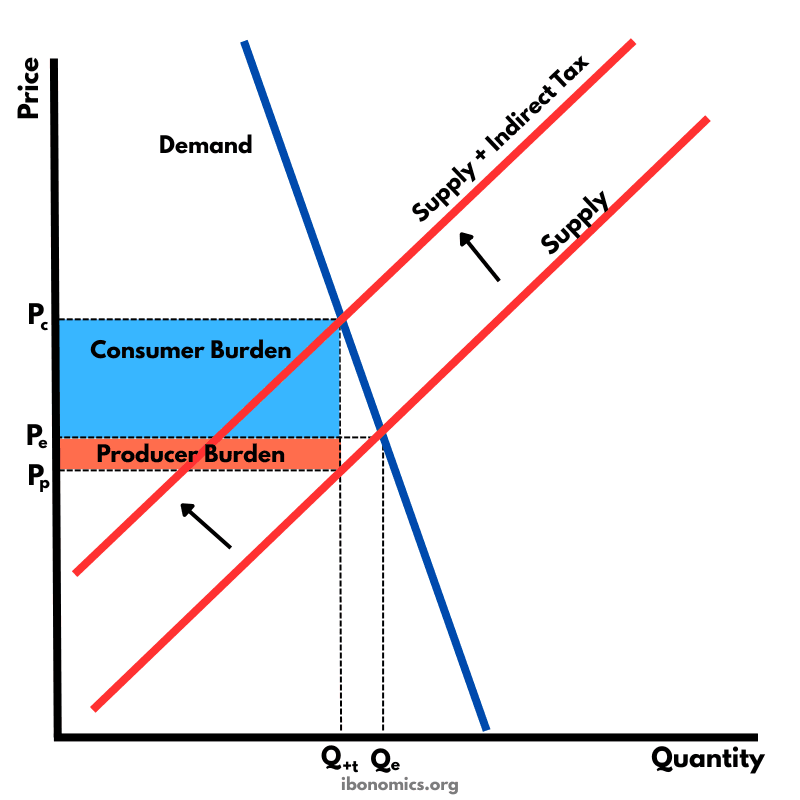
A supply and demand diagram showing the effect of an indirect tax on a good with inelastic demand. The consumer bears a larger share of the tax burden.
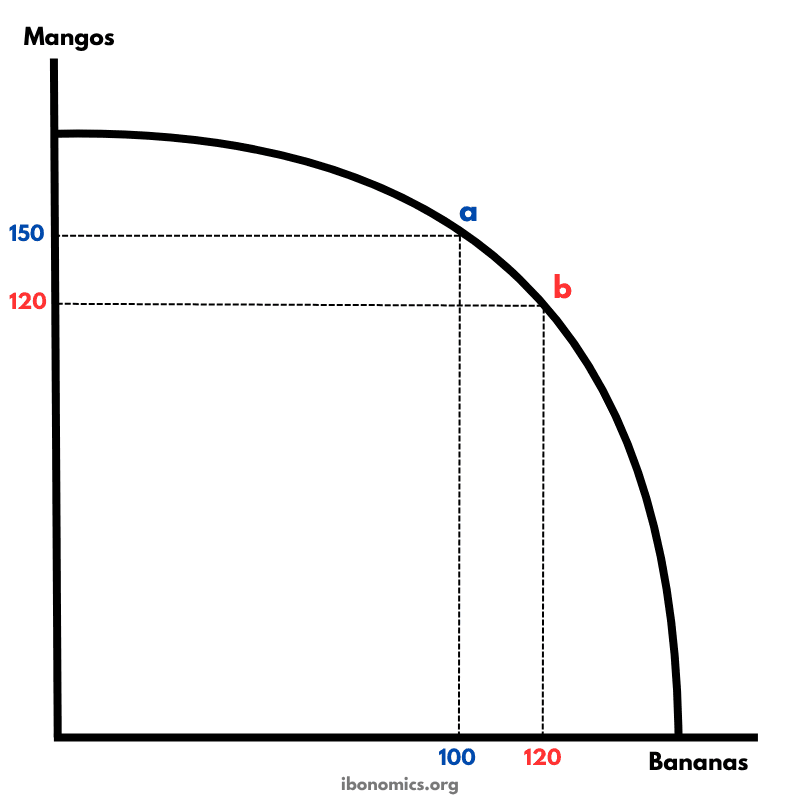
A production possibility curve illustrating the concept of opportunity cost and the trade-offs between producing two goods: mangos and bananas.
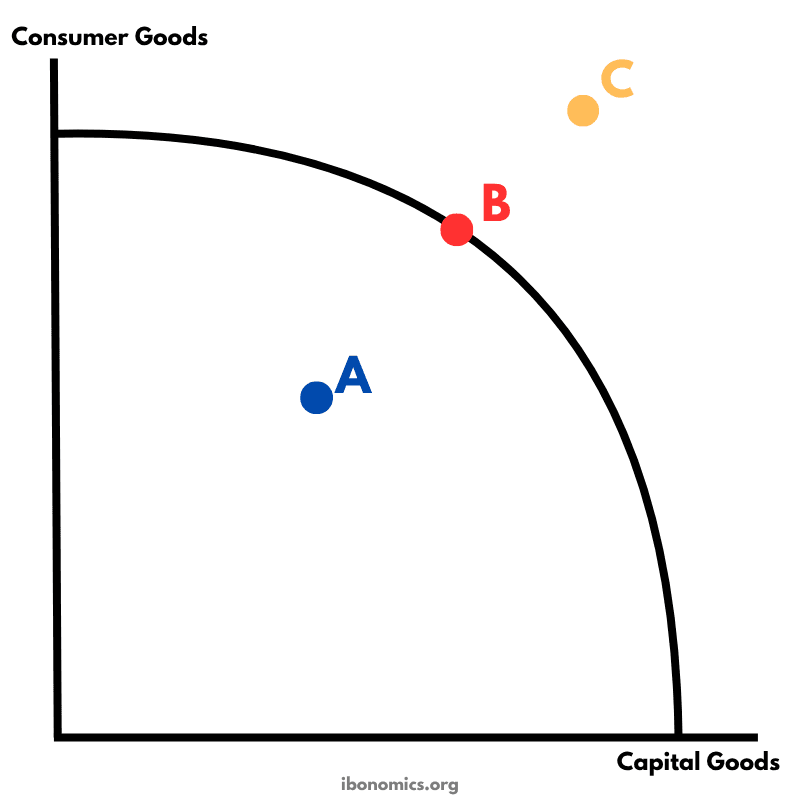
A PPC diagram showing different levels of production efficiency and economic feasibility using combinations of consumer and capital goods.

A model illustrating how money, goods, services, and resources flow between households, firms, the government, the financial sector, and the foreign sector in an economy.
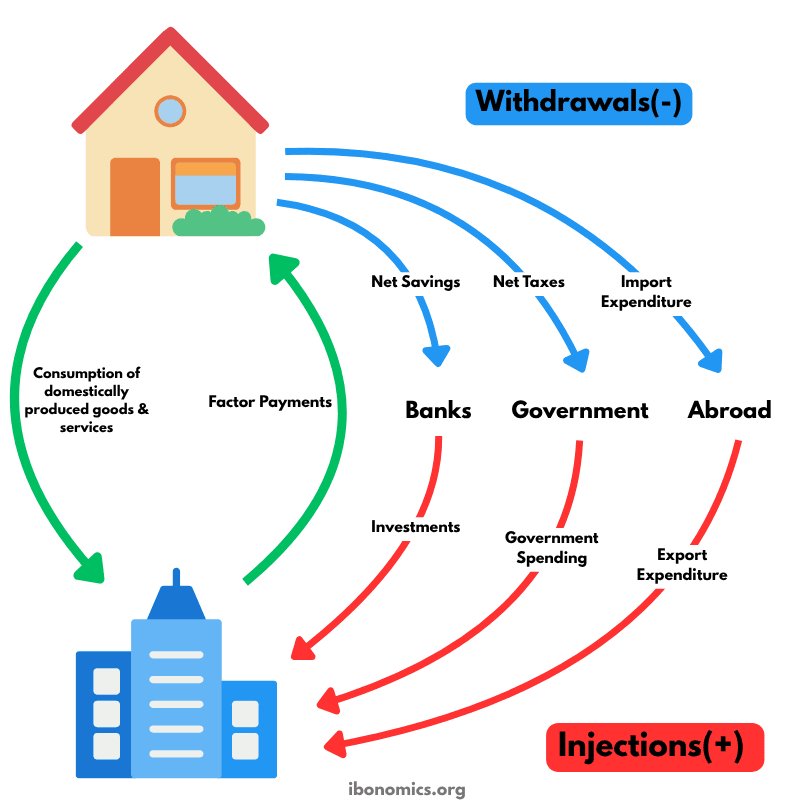
A refined circular flow model highlighting the roles of injections and withdrawals in determining national income and economic equilibrium.